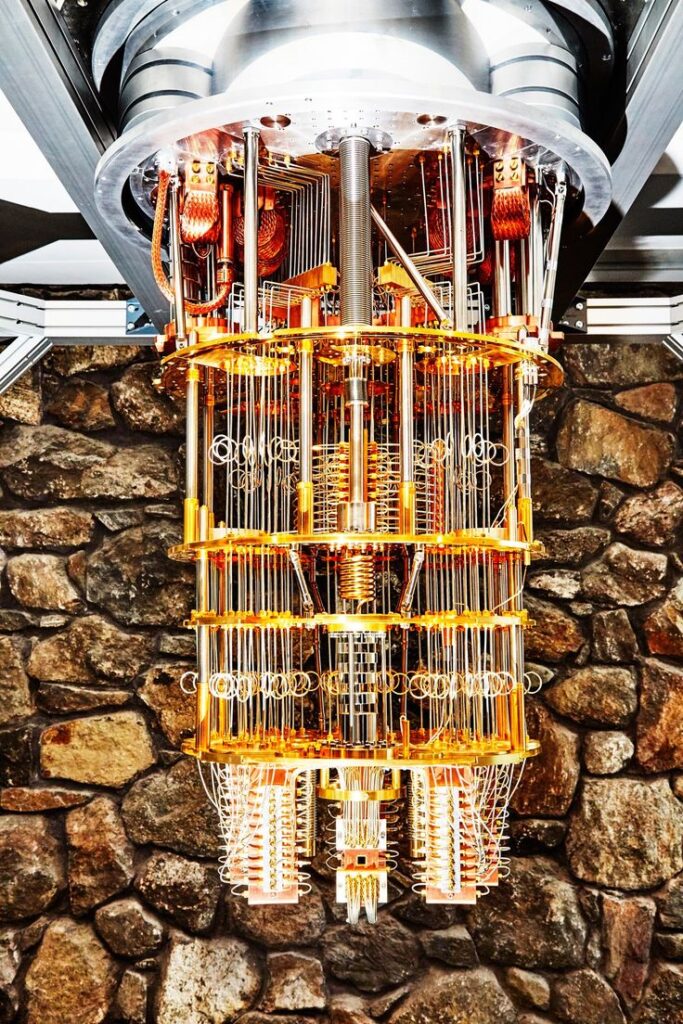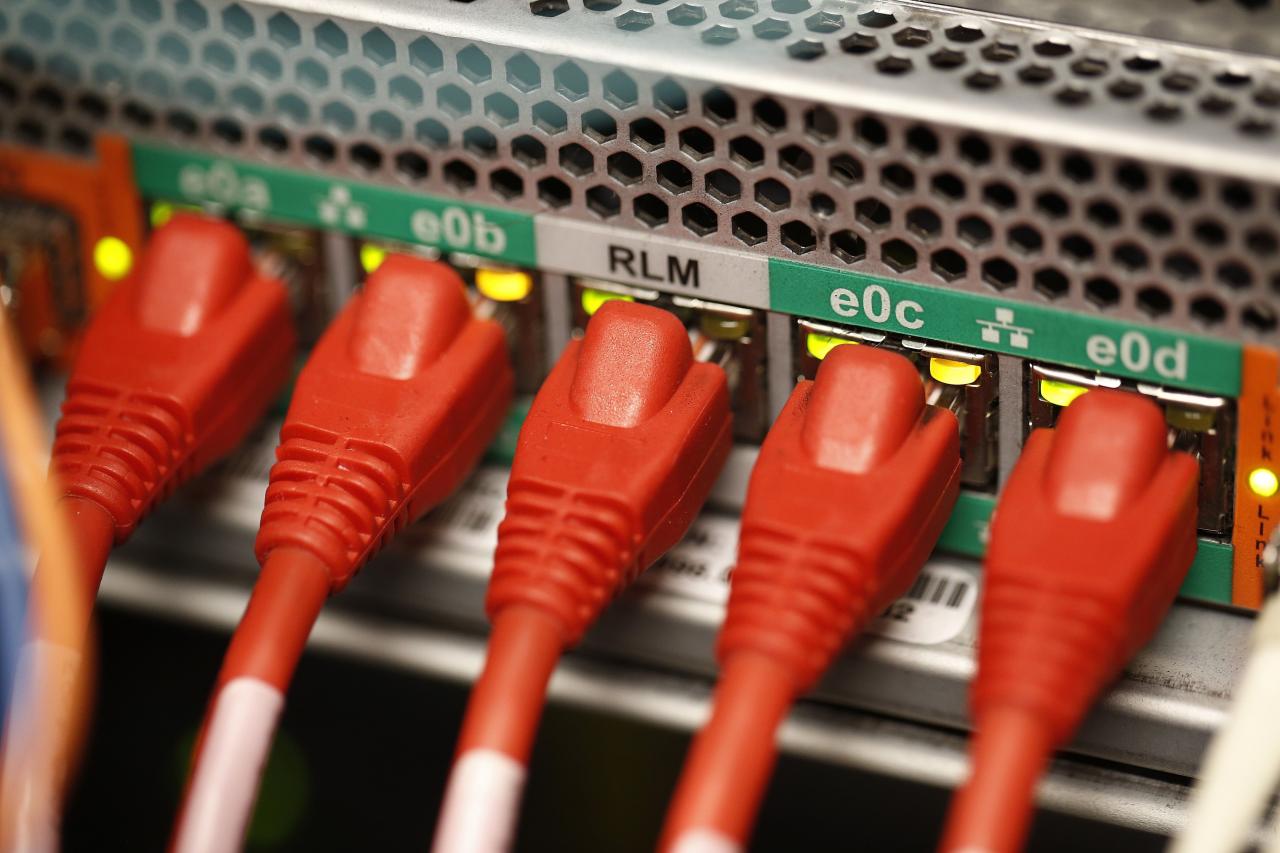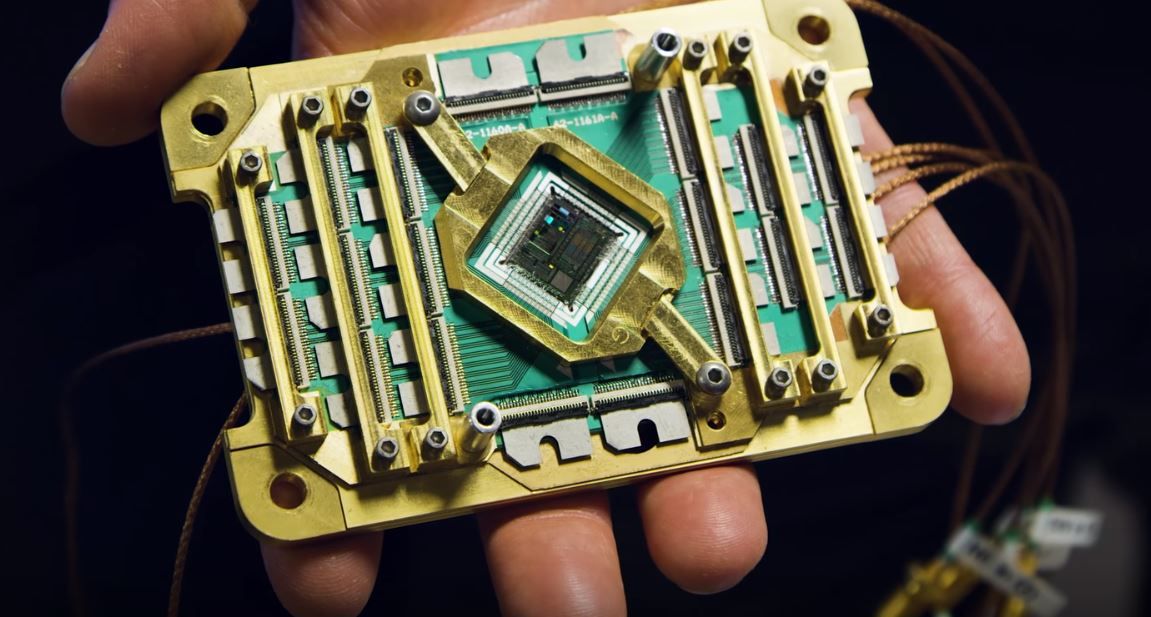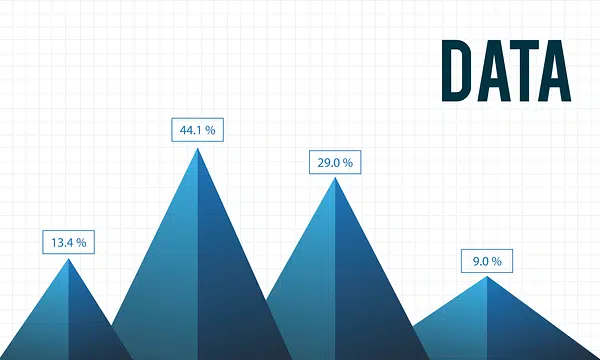The landscape of computation is on the precipice of a monumental shift, one that promises to unlock capabilities previously confined to the realm of science fiction. At the heart of this coming revolution lies quantum computing, a revolutionary paradigm that harnesses the enigmatic principles of quantum mechanics to process information in fundamentally new ways. While full-scale, fault-tolerant quantum computers are still some years away, the burgeoning development of quantum computing kits signals a crucial step towards democratizing access to this transformative technology. These kits, encompassing both hardware and software, are not merely educational tools; they are the early blueprints for a future where intractable problems become solvable, truly marking computing’s next frontier.
The Unseen Power: Understanding Quantum Computing’s Promise
To truly grasp the significance of quantum computing kits, it is essential to first comprehend the foundational differences between classical and quantum computing, and why the latter holds such immense promise for fields ranging from medicine to finance.
A. Classical Computing: The Bits and Bytes We Know
Our current digital world is built upon classical computing, which relies on a binary system of bits.
- Binary Bits: A classical bit represents information as either a 0 or a 1. It’s a definitive state, like an on/off switch.
- Sequential Processing: Classical computers process information sequentially, performing one calculation after another. While incredibly fast for many tasks, this sequential nature limits their ability to tackle certain types of complex problems.
- Limitations: For problems involving vast numbers of variables and complex interactions (e.g., simulating molecular structures, optimizing large logistical networks, breaking modern encryption), classical computers can take an impractically long time – often billions of years – or simply lack the memory capacity to even represent the problem. Their power grows linearly, but some problems grow exponentially.
B. Quantum Computing: A Leap Beyond Binary
Quantum computing leverages phenomena from quantum mechanics – the branch of physics that describes matter and energy at the most fundamental level – to perform computations.
- Qubits (Quantum Bits): Unlike classical bits, a qubit can exist in a superposition of both 0 and 1 simultaneously. This means a single qubit can represent a combination of states, dramatically increasing the information density.
- For example, with two classical bits, you can represent one of four states (00, 01, 10, 11) at a time. With two qubits, you can represent all four states simultaneously. This exponential scaling of information capacity is a core advantage.
- Superposition: The ability of a qubit to be in multiple states at once. This allows quantum computers to explore many possible solutions to a problem simultaneously, rather than trying them one by one.
- Entanglement: A peculiar quantum phenomenon where two or more qubits become linked, such that the state of one instantly influences the state of the others, regardless of distance. This allows for highly correlated operations and massive parallel processing.
- Quantum Interference: Similar to wave interference, this property allows certain probabilities to be amplified and others cancelled out, helping to hone in on the correct solution from the many possibilities explored via superposition.
- Quantum Algorithms: Specific algorithms are designed to exploit these quantum phenomena. Famous examples include Shor’s algorithm (for factoring large numbers, potentially breaking RSA encryption) and Grover’s algorithm (for unstructured search problems). These algorithms often offer exponential speedups over their classical counterparts for certain problem types.
C. The Promise: Solving the Unsolvable
The theoretical power of quantum computers lies in their ability to tackle problems currently intractable for even the most powerful supercomputers.
- Drug Discovery and Material Science: Simulating molecular interactions with unprecedented accuracy, leading to the discovery of new drugs, advanced materials, and more efficient catalysts.
- Financial Modeling: Optimizing complex financial models, portfolio management, and risk analysis with greater speed and precision.
- Cryptography: The ability to break existing public-key encryption standards, necessitating the development of post-quantum cryptography. Conversely, quantum mechanics also offers quantum-safe communication methods (Quantum Key Distribution).
- Optimization Problems: Solving complex optimization challenges in logistics, supply chain management, and resource allocation more efficiently than classical methods.
- Artificial Intelligence: Accelerating machine learning algorithms, particularly in areas like pattern recognition, data analysis, and potentially enabling truly generalized AI.
The Genesis of Quantum Computing Kits: Democratizing Access
Given the complexity and cost of building quantum hardware, early access has been limited to a select few research institutions and major tech companies. However, the emergence of quantum computing kits is changing this, bringing the technology closer to a broader audience.
A. The Need for Accessibility and Education
The quantum revolution requires a new generation of scientists, engineers, and developers. Quantum kits address this by providing:
- Educational Tools: Enabling students and researchers to learn the principles of quantum computing hands-on, developing the necessary skills for a future quantum workforce.
- Experimentation Platforms: Providing a playground for developing and testing new quantum algorithms, even if on small-scale quantum hardware or simulators.
- Democratizing Research: Lowering the barrier to entry for smaller institutions, startups, and individual enthusiasts to contribute to quantum research and development.
B. Components of a Quantum Computing Kit
A “quantum computing kit” typically encompasses a combination of hardware and software elements designed for learning and limited experimentation.
- Quantum Hardware (Small Scale):
- Quantum Processors (QPUs): These are the core components, often superconducting transmon qubits or trapped ion systems, typically with a very small number of qubits (e.g., 2-10 qubits). These are “noisy intermediate-scale quantum” (NISQ) devices, meaning they have limited coherence times and are prone to errors.
- Control Electronics: Sophisticated systems required to manipulate the qubits (e.g., sending microwave pulses to superconducting qubits, using lasers for trapped ions).
- Cryogenic Systems (for Superconducting Qubits): Superconducting qubits need to be cooled to extremely low temperatures, near absolute zero, requiring complex dilution refrigerators. These are often integrated into the “kit” as part of a research-grade setup.
- Vacuum Chambers (for Trapped Ions): Trapped ion qubits require ultra-high vacuum environments.
- Quantum Software Development Kits (SDKs): These are crucial for abstracting away the hardware complexities and allowing users to program quantum circuits.
- Quantum Programming Languages/Frameworks: Tools like IBM’s Qiskit (Python-based), Google’s Cirq (Python), Microsoft’s Q# (.NET), Amazon’s Braket SDK. These allow users to define quantum gates, circuits, and algorithms.
- Quantum Simulators: Software that emulates quantum hardware on classical computers. These are vital for testing quantum circuits and algorithms without access to expensive quantum hardware, especially for a larger number of qubits (though limited by classical computational power).
- Cloud Access: Many kits provide an interface to access larger quantum processors remotely via cloud platforms (e.g., IBM Quantum Experience, Amazon Braket, Azure Quantum). This allows users to run their quantum programs on real, albeit still limited, quantum hardware.
- Tutorials and Documentation: Comprehensive guides, examples, and educational resources are integral parts of a kit to facilitate learning and experimentation.
C. Varieties of Quantum Kits Emerging
Quantum kits are appearing in various forms, catering to different levels of expertise and research goals:
- Desktop Quantum Processors: Smaller, sometimes room-temperature (e.g., NMR-based, NV-center diamond) or modestly cooled quantum processors designed for educational or niche research purposes. These typically have very few qubits.
- Cloud-Based Quantum Access Kits: These kits primarily consist of SDKs and robust cloud connectivity, allowing users to write quantum code and execute it on quantum hardware maintained by major cloud providers. This is the most common form of “accessible” quantum computing today.
- Quantum Curriculum Kits: Specialized educational bundles for universities or research groups, combining small-scale hardware with comprehensive software, course materials, and remote lab access.
- Specialized Component Kits: For advanced researchers, these kits might provide individual quantum components (e.g., single photon sources, quantum optical elements) for building custom experimental setups.
The Transformative Impact: Reshaping Industries with Quantum Kits
While still in their nascent stages, the proliferation of quantum computing kits is laying the groundwork for future industrial applications, fostering innovation and talent development.
A. Accelerating Research and Development
Quantum kits are pivotal in speeding up the exploration of quantum algorithms and applications.
- Algorithm Discovery: Researchers can quickly prototype and test new quantum algorithms on simulators and small quantum devices, accelerating the search for quantum advantage in various problem domains.
- Feasibility Studies: Businesses can use kits to conduct feasibility studies for quantum solutions relevant to their specific challenges, identifying which problems might benefit most from quantum acceleration.
- Cross-Disciplinary Collaboration: The accessibility provided by kits fosters collaboration between quantum physicists, computer scientists, material scientists, chemists, and financial analysts, leading to novel interdisciplinary solutions.
B. Cultivating a Quantum Workforce
A critical bottleneck to quantum adoption is the severe shortage of skilled quantum engineers and developers. Quantum kits are directly addressing this.
- Hands-on Learning: Kits provide invaluable practical experience, moving beyond theoretical concepts to actual quantum programming and execution.
- Talent Development Pipelines: Universities and educational institutions can integrate these kits into their curricula, creating structured pipelines for training the next generation of quantum experts.
- Upskilling Existing Professionals: Existing developers and scientists can use kits to upskill themselves in quantum computing, preparing their careers for the quantum era.
C. Prototyping and Early Application Development
Even small, noisy quantum processors accessed via kits can be useful for early-stage application development.
- Proof-of-Concept Development: Businesses can build basic proofs-of-concept for quantum applications, demonstrating potential value to stakeholders without requiring massive investment in proprietary hardware.
- Benchmarking and Performance Analysis: Kits allow for early benchmarking of quantum algorithms against classical ones for specific problem instances, helping to understand potential speedups and resource requirements.
- Quantum Software Ecosystem Growth: As more developers gain hands-on experience, the quantum software ecosystem will grow, leading to more robust libraries, tools, and best practices.
D. Driving Innovation in Quantum Hardware
The feedback loop from users of quantum kits, even those with limited hardware, is invaluable for quantum hardware developers.
- Identifying Pain Points: User experience with kits helps hardware teams understand practical challenges like noise, coherence, connectivity, and control complexity.
- Feature Prioritization: Feedback guides the prioritization of new features and improvements in future generations of quantum processors.
- Standardization Efforts: As more kits and platforms emerge, there’s a natural push towards standardization of quantum programming interfaces and hardware specifications, which benefits the entire ecosystem.
Challenges and Considerations for Quantum Kit Adoption
While the potential of quantum computing kits is immense, their widespread adoption and utility still face several significant challenges that require ongoing research and development.
A. Qubit Limitations and Noise
The quantum processors available in current kits are primarily NISQ (Noisy Intermediate-Scale Quantum) devices.
- Limited Qubit Count: Most accessible quantum computers have a relatively small number of qubits (e.g., 5-100). Many practical, high-impact quantum algorithms require hundreds or thousands, or even millions, of stable, error-corrected qubits.
- High Error Rates (Noise): Qubits are extremely sensitive to environmental interference (noise), leading to computation errors. Maintaining quantum coherence (the state where qubits retain their quantum properties) for long enough to perform complex calculations is a major challenge. Error correction mechanisms are rudimentary or non-existent in NISQ devices.
- Short Coherence Times: The delicate quantum states decay very quickly, limiting the number of operations that can be performed before errors accumulate. This restricts the depth and complexity of quantum circuits that can be reliably executed.
These limitations mean that current quantum kits are primarily suitable for academic research, algorithm testing, and learning, rather than solving real-world, large-scale problems.
B. Software Maturity and Development Complexity
While quantum SDKs are advancing, the software ecosystem is still relatively nascent.
- Steep Learning Curve: Quantum programming concepts (superposition, entanglement, quantum gates) are fundamentally different from classical programming, presenting a steep learning curve for developers.
- Limited Debugging Tools: Debugging quantum programs can be extremely challenging due to the probabilistic nature of quantum mechanics and the difficulty of observing qubit states without disturbing them.
- Lack of Standardized Libraries: The equivalent of extensive classical software libraries and frameworks (e.g., for data processing, machine learning) is still under development for quantum computing.
- Hardware-Software Gap: Bridging the gap between high-level quantum algorithms and the specific constraints and capabilities of different underlying quantum hardware architectures remains a complex problem.
C. Cost and Accessibility for True Hardware
While quantum kits aim to democratize access, high-end, research-grade quantum hardware (even small-scale) remains extremely expensive and difficult to maintain.
- Prohibitive Cost: The specialized cryogenic systems, precision control electronics, and fabrication of quantum chips are incredibly costly, making physical ownership of quantum hardware out of reach for most individuals and smaller institutions.
- Infrastructure Requirements: Maintaining quantum hardware often requires specialized lab environments, dedicated engineering teams, and significant power and cooling infrastructure, adding to the operational burden.
- Limited Access to Larger Systems: Access to more powerful, albeit still noisy, quantum computers is primarily via cloud-based services, which may involve queues, usage fees, and still have limitations.
D. The “Quantum Advantage” / “Quantum Supremacy” Debate
The concept of “quantum advantage” (where a quantum computer can solve a problem demonstrably faster than any classical supercomputer) is still a subject of active research and debate.
- Specific Problem Sets: Quantum computers are not a universal replacement for classical computers; they excel at specific types of problems. Identifying these “quantum-native” problems that offer a true advantage is ongoing.
- Benchmarking Challenges: Fairly benchmarking quantum against classical algorithms is complex, as classical algorithms are constantly improving, and quantum hardware is still noisy and error-prone.
- Sustained Advantage: Achieving a sustained and practical quantum advantage for real-world business problems, beyond academic proofs, remains a future goal.
E. Talent Gap and Education Infrastructure
Despite the emergence of kits, the global talent gap in quantum computing remains vast. There aren’t enough quantum physicists, computer scientists, and engineers with the interdisciplinary skills needed to build and apply quantum technologies. The educational infrastructure (universities, specialized training programs) is still catching up to meet this growing demand.
Best Practices for Engaging with Quantum Computing Kits
For individuals and organizations looking to engage with quantum computing through these emerging kits, a structured approach will maximize learning and potential impact.
A. Start with Foundational Quantum Mechanics
Before diving into programming, build a solid understanding of foundational quantum mechanics and linear algebra. Concepts like superposition, entanglement, quantum gates, and Dirac notation are fundamental. Many online courses, textbooks, and university programs offer excellent introductions. A strong theoretical base will make practical quantum programming much more intuitive.
B. Leverage Quantum Simulators Extensively
Begin by using quantum simulators provided within SDKs (e.g., Qiskit’s Aer, Cirq’s simulators). Simulators allow you to test quantum circuits and algorithms on classical computers, providing immediate feedback without the constraints of real quantum hardware (noise, limited qubits, queue times). This is crucial for iterating on quantum code and understanding its behavior.
C. Focus on Small, Illustrative Quantum Algorithms
Initially, concentrate on implementing and understanding small, well-known quantum algorithms. Examples include:
- Deutsch-Jozsa Algorithm: Demonstrates superposition and interference.
- Grover’s Algorithm: Illustrates quadratic speedup for unstructured search.
- Shor’s Algorithm (Conceptual): Understand its principles, even if full implementation is beyond current hardware.
- Quantum Teleportation: A fascinating demonstration of entanglement.
Understanding these building blocks provides a strong foundation for more complex applications.
D. Utilize Cloud-Based Quantum Hardware for Real Experience
Once comfortable with simulators, transition to using cloud-based quantum hardware platforms (e.g., IBM Quantum Experience, Amazon Braket, Azure Quantum). Running your quantum circuits on actual quantum processors, even small, noisy ones, provides invaluable experience with real-world quantum effects, like noise and coherence limitations, and helps understand the challenges of calibration and error mitigation.
E. Engage with the Quantum Community
The quantum computing field is highly collaborative. Actively engage with the global quantum community:
- Online Forums and Groups: Participate in discussions on platforms like Stack Exchange, Reddit, or dedicated Slack/Discord channels.
- Open Source Projects: Contribute to or learn from open-source quantum projects.
- Conferences and Workshops: Attend virtual or in-person events to stay updated on the latest research and network with experts.
- Quantum Challenges/Hackathons: Participate in coding challenges or hackathons to apply your skills and learn from others.
F. Specialize in a Quantum SDK and Ecosystem
While it’s good to be aware of different quantum SDKs, initially, specialize in one primary SDK (e.g., Qiskit for IBM, Cirq for Google, Q# for Microsoft). Deeply understanding one ecosystem will make you productive faster, and the core quantum concepts are transferable. Most major cloud providers now support multiple SDKs through their quantum services.
G. Keep Up-to-Date with Research and Hardware Advancements
The field of quantum computing is moving at an incredible pace. Regularly keep up-to-date with the latest research papers, hardware breakthroughs, and software releases. Follow leading research institutions, companies, and prominent figures in the quantum space. Understand the different qubit technologies (superconducting, trapped ion, photonic, topological) and their respective advantages and disadvantages.
H. Consider Quantum-Classical Hybrid Approaches
For current NISQ devices, many practical applications involve quantum-classical hybrid algorithms. This means parts of the computation are handled by a classical computer (e.g., optimization loops, data pre-processing), while a small, critical part is offloaded to the quantum processor. Understanding how to design and implement these hybrid approaches is key to getting value from current quantum hardware.
The Future Trajectory of Quantum Computing Kits
The current generation of quantum computing kits represents merely the tip of the iceberg. The future holds promises of more sophisticated, powerful, and user-friendly kits that will further accelerate quantum adoption and application.
A. More Powerful and Accessible Hardware Kits
Expect the development of more powerful desktop quantum processors that are easier to operate and maintain, even if still limited in qubit count. Innovations in qubit technology (e.g., silicon-based qubits, topological qubits) could lead to less demanding cryogenic requirements or even room-temperature quantum systems, making physical hardware kits more widely accessible and affordable for research labs and educational institutions.
B. Enhanced Software Development Environments
The quantum software ecosystem will mature significantly. This includes:
- Advanced Debugging Tools: More intuitive and powerful debugging capabilities that allow developers to understand quantum program execution more effectively.
- High-Level Quantum Languages: Development of higher-level quantum programming languages that abstract away more of the low-level quantum gate operations, making quantum programming more accessible to classical developers.
- Integrated Development Environments (IDEs): Dedicated IDEs with built-in quantum simulators, syntax highlighting for quantum languages, and seamless integration with cloud-based quantum hardware.
- Quantum Cloud Orchestration: More sophisticated platforms for orchestrating complex quantum workloads across different quantum hardware backends and hybrid classical-quantum workflows.
C. Domain-Specific Quantum Libraries and Applications
As the field matures, expect to see the proliferation of domain-specific quantum libraries and application frameworks. Instead of building quantum circuits from scratch, developers in finance, chemistry, or logistics will leverage pre-built quantum modules designed for their specific optimization, simulation, or machine learning tasks. This will accelerate the transition from fundamental research to practical applications.
D. Quantum-Safe Computing Integration
With the looming threat of quantum computers breaking current encryption, future quantum kits will increasingly focus on quantum-safe computing. This will involve:
- Post-Quantum Cryptography (PQC) Libraries: Tools and libraries for implementing and testing PQC algorithms that are resistant to quantum attacks.
- Quantum Key Distribution (QKD) Hardware/Software: Kits that allow for experimentation with quantum-secure communication methods, potentially extending to integration with network security tools.
- Hybrid Cryptographic Solutions: Tools to help organizations transition to hybrid cryptographic systems that combine classical and post-quantum algorithms during the migration period.
E. AI-Powered Quantum Design and Optimization
Artificial Intelligence and Machine Learning will play an increasing role in the design and optimization of quantum computers and quantum algorithms. AI could assist in:
- Automated Quantum Circuit Design: AI algorithms automatically generating optimal quantum circuits for specific problems.
- Error Mitigation and Correction: AI helping to detect and correct errors in quantum computations more effectively.
- Quantum Hardware Characterization: ML models analyzing quantum hardware performance and suggesting improvements.
F. Democratization through Education and Open Science
The trend towards democratization through education and open science will continue. More universities will offer quantum computing courses, and open-source quantum projects will flourish. This widespread access to learning resources and collaborative tools will be critical for building the global talent pool necessary to realize the full potential of quantum computing.
Conclusion
The emergence of quantum computing kits marks a pivotal moment in the journey towards the quantum era. While full-scale, fault-tolerant quantum computers remain a long-term goal, these early kits are democratizing access to this complex technology, providing invaluable tools for learning, experimentation, and early application development. They are the essential stepping stones for a new generation of scientists and engineers to begin grappling with the profound principles of quantum mechanics in a computational context.
Despite current limitations in qubit count and noise, the promise of quantum computing to solve previously intractable problems in fields from drug discovery to financial modeling is immense. By fostering a deeper understanding of quantum algorithms, accelerating research, and building a vital quantum workforce, these kits are not just facilitating academic curiosity; they are actively shaping the future of computation. The path forward involves overcoming significant engineering and scientific challenges, but with continuous innovation in both hardware and software, quantum computing kits are truly acting as the early blueprints for computing’s next, unimaginable frontier.














